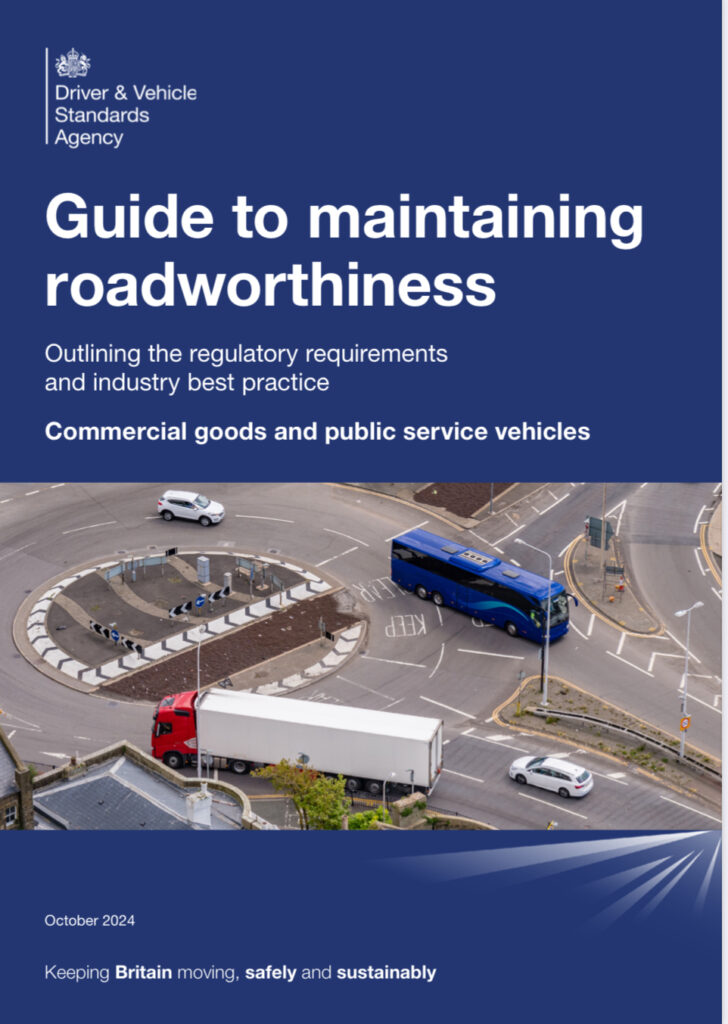Changes to The Guide to Maintaining Roadworthiness
On 5 November 2024, the updated version of the Guide to Maintaining Roadworthiness has been published.

A number of significant changes have been included which we have summarised below. All Operators and Transport Managers are expected to have a good understanding of the expectations of the Traffic Commissioner relating to maintenance facilities and arrangements. Many of the changes confirm what has been advised generally for the past few years and is intended to ensure there is no misunderstanding of the standards expected.
Outsourced Maintenance
The first change includes guidance, at Section 5, relating to outsourcing of maintenance. This is commonplace, but it is clear that an Operator must scrutinise and quality check the work being done by the maintenance provider. Operators are advised to undertake quality assurance checks. They are reminded that they must ensure that the technicians are suitably qualified and to make themselves aware of formal recognised standards such as the IRTE Workshop Accreditation Scheme. We will see the trialling of a rating system with MPRS Scheme over the next 12 months.
Brake Testing
The most publicised change at 5.3 and 5.3a, is one which many will be aware of this. The expectation is that there will be a roller brake test at every PMI for vehicle and trailer. This should be laden at least quarterly but preferably on every occasion. There are limited circumstances outlined where a decelerometer may be used, but operators should make themselves aware of the limits of this. From April 2025 where a laden roller brake test is not completed, there must be a written risk assessment to justify the reasons for this. A template for a brake risk assessment template is available at Annex 7
It will be acceptable to use a suitable Electronic Performance Monitoring System in accordance with the guide.
MOT
Guidance to ensure that MOT results are still monitored and scrutinised despite the lack of printed certificate, following the DVSA changes in 2024. An MOT failure or PRS should always be investigated and documented.
The full Guide to Maintaining Roadworthiness can be accessed here.
For further advice contact the Smith Bowyer Clarke Team today on 01332 987420.



